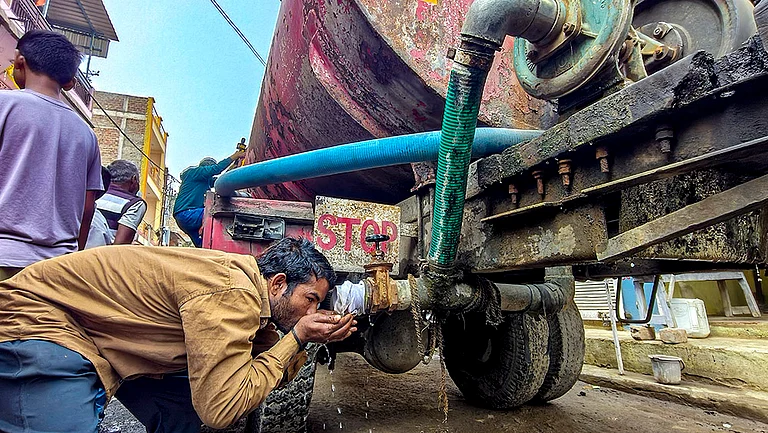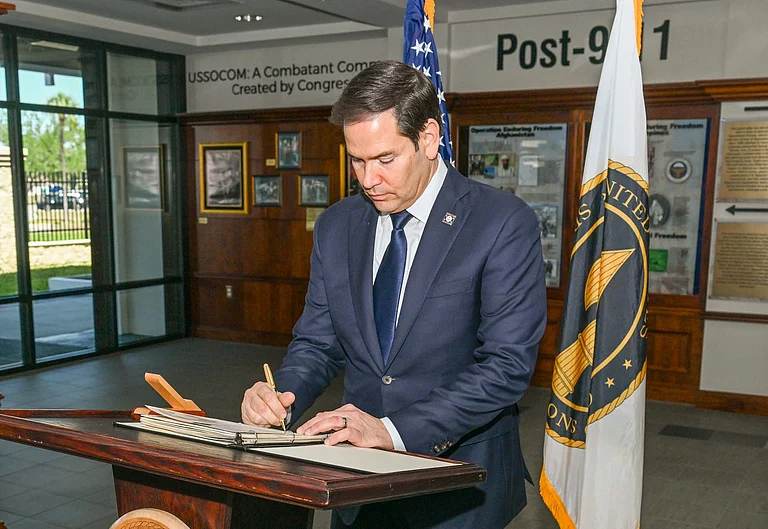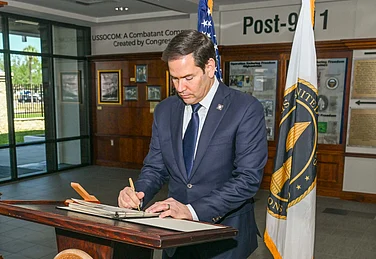Africa evokes images in people's minds. To some it brings to mind pictures of colourfully attired tribes, grassy ‘veldt’ plains dotted with wildlife, rivers and sunsets. For others, it means mines and minerals and diamonds while for still others it evokes images of disease, poverty and starvation. Extending over 8,000 km from Cape Agulhas (South Africa) in the South to Cape Angela (Tunisia) in the north is the continent of Africa with 54 countries. It is the second-largest continent with 30.4 Million square kilometres, over 1.2 Billion people and a mind-boggling linguistic, ethnic and cultural diversity. Along with Arabic, English, French and Portuguese, there are nearly 2,000 native languages spoken in Africa with Arabic being the most widely spoken language! It also surprises many that two-thirds of Africa lies in the Northern Hemisphere, though in popular perception Africa is in the southern hemisphere. Africa also straddles not only the equator but also the prime meridian making it the only continent situated in all four cardinal hemispheres.
The filmi angle
In popular iconography, Africa continues to be a far and mysterious land, where people are banished or where people went to earn their fortunes. In the film, Lagaan, the English officer who lost the cricket match to the ‘natives’, was after all banished to the ‘jungles of Africa’. In the Bengali novel and later film Chander Pahad, the hero gets a job at the Uganda Railway and ends up discovering a cave of diamonds. Hollywood has swerved between extremes in its depiction of Africa. It has shown stories of distress, suffering and exploitation in films like Amistad, Blood Diamond and Constant Gardener or pictured Africa as ‘quaint but unique’. Remember Eddie Murphy in Coming to America as the prince of the fictional African nation of Zamunda or Chadwick Bosman in Black Panther showing the super developed fictional Wakanda or even Beyoncé's Black is King. Many children also got to know Africa through comic book portrayals of Tarzan and Phantom - though some say Phantom is based in India- and of course "Tintin in Congo”.
So what is Africa?
The reality of Africa like all other realities is in shades of grey; never ‘black or white’. Africa is a continent witnessing rapid economic growth, rising educational and health standards, increasing gender parity and expanding infrastructure and connectivity. Of the 10 fastest growing economies of the world in 2019, five were in Africa and in the World Banks’ 2019 ‘Doing Business’ index, five of the 10 most improved countries were in Africa. On the other hand, World Bank figures for 2020 say that nine African countries figure among the 10 poorest countries in the World.
Challenges aplenty
Many countries in Africa have a vulnerability to debt and lack economies of scale and therefore have low resilience to any external or internal shock. The problem is further compounded by inadequate infrastructure and social inequalities. Climate change is also beginning to have an impact with an increase in aridity and droughts in parts of southern Africa while the Northern parts have seen increased instances of forest fires and intense summers. Water levels in the largest artificial lake behind Kariba dam between Zambia and Zimbabwe dropped by six metres before seeing some recovery this year. The city of Capetown nearly came to day zero, when all water in its reservoirs would have finished in 2018. In addition, several countries that had tourism as one of the pillars of their economy have suffered the impact of COVID with reduced tourist flows.
Mapping it all
Africa is a large continent; bigger than the US, China, India and Western Europe put together. However, on world maps, it appears just a little bigger than Greenland. The distortion boils down to the 16th-century map projection by European cartographer Gerardus Mercator, which continues to be used today. The Mercator projection was made to simplify things for navigators when the age of discovery was being launched in Europe. Drawing the latitudes and longitudes as straight lines crossing at right angles helped sailors to navigate their treacherous voyages around the world. While a revolutionary tool for seafarers and explorers, the projection ended up distorting the relative size of the continents and countries, to the advantage of the West. The result was that it made countries in Europe seem unnaturally big and therefore powerful and intimidating. A theory says that European imperialism was perhaps spurred on by these map projections that reinforced the notions of self-importance held by those nations!
India and Africa are maritime neighbours and the geographical proximity and the easy navigability of the Indian Ocean resulted in well-established trade networks. Today, India has a diplomatic presence in 40 African countries and is the fourth largest trading partner for Africa with nearly $70 billion in trade. Indian investment in Africa is well over $ 70 Billion. There are over 205 Lines of Credit (LOCs) amounting to US$ 12.03 billion to implement infrastructure projects all across Africa. The three India-Africa Forum Summits in 2008, 2011 and 2015 have further reinforced the development partnership with the continent. It is a relationship based on cooperation, sharing of development experiences and focused on addressing the priorities and needs of the African countries.
The writer is Joint Secretary (East and Southern Africa) in the MEA. He had served in Egypt, South Africa and Tunisia.



























